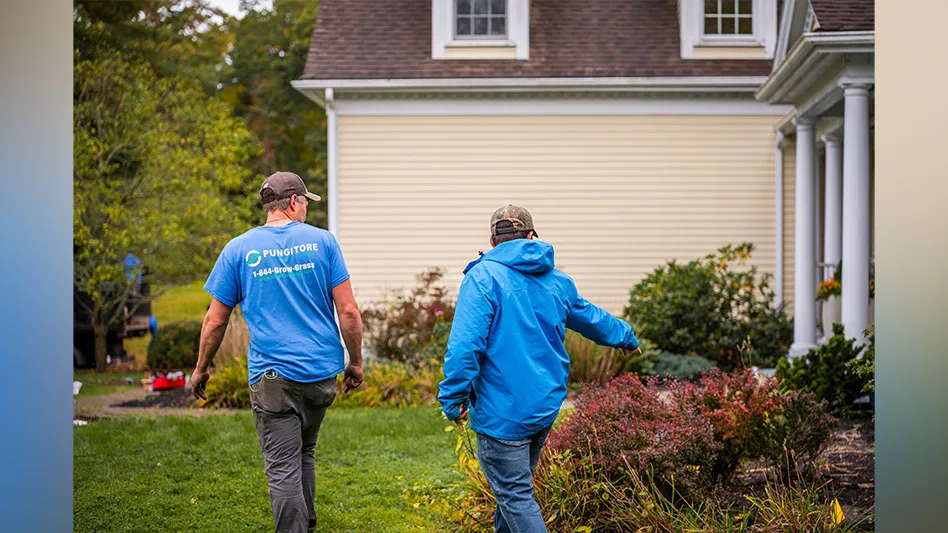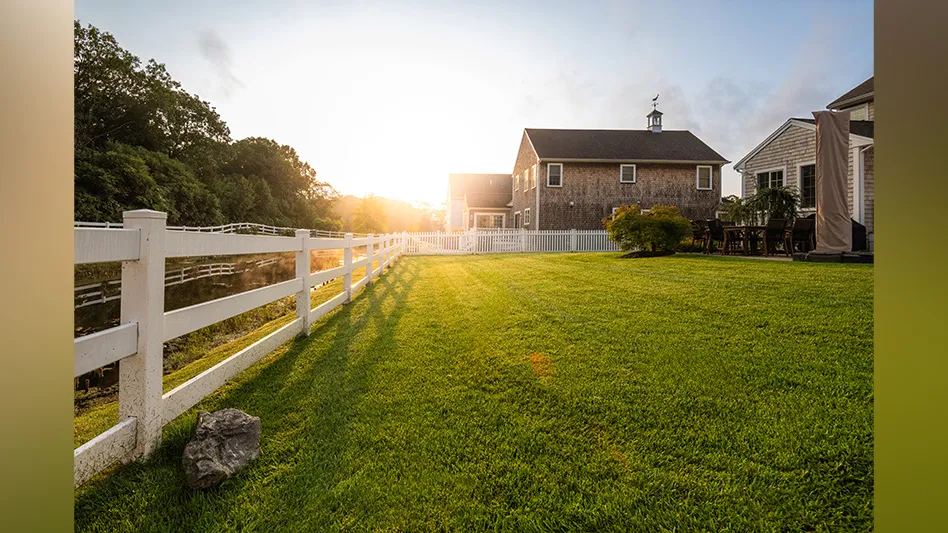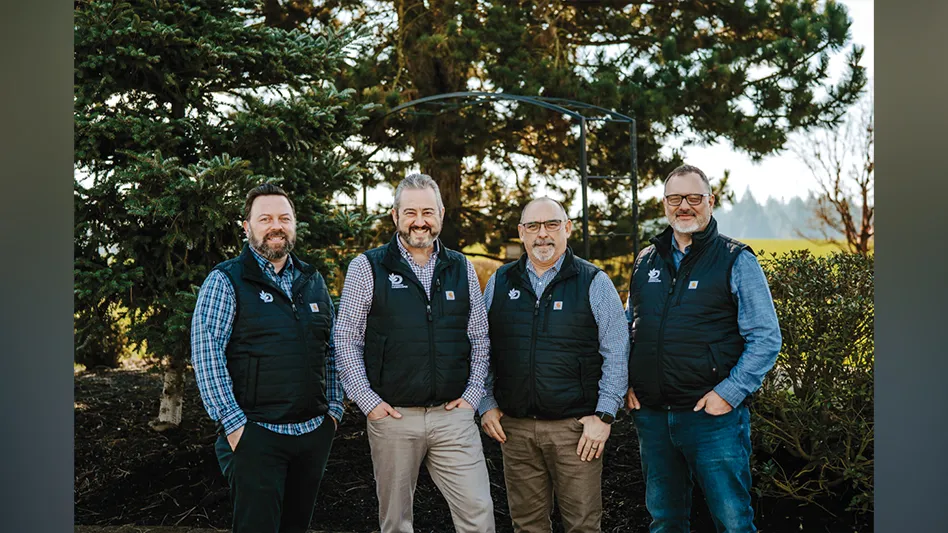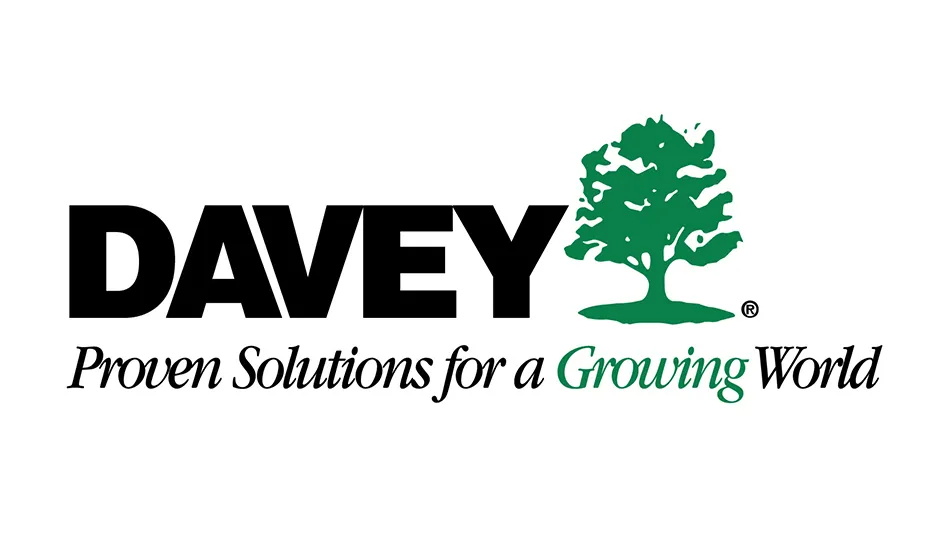
 In the midst of one of the worst droughts in California’s – and the country’s – history, the landscaping industry is taking some punches. Swaths of lush turfgrass are seen by many as excessive and wasteful. The state has mandated a 25 percent reduction in water use across the board, and many cities are paying residents to tear out their lawns.
In the midst of one of the worst droughts in California’s – and the country’s – history, the landscaping industry is taking some punches. Swaths of lush turfgrass are seen by many as excessive and wasteful. The state has mandated a 25 percent reduction in water use across the board, and many cities are paying residents to tear out their lawns.
Chris Angelo, CEO at Stay Green, is in the middle of the fight. His Los Angeles-based commercial maintenance operation, and its 265 employees, depend on those acres of lush turfgrass for its $17.8 million in annual revenue.
And as water restrictions grow ever tighter and water districts start paying even more for businesses to tear out their turf, what’s the future for the landscape industry? Turns out for smart landscapers like Angelo, it’s pretty good.
Thanks in large part to those rebates from water districts, the team at Stay Green has completed 7 acres of turf conversions this year. Crews kill clients’ turfgrass and replace it with low-water-use plants, mulch and river rock pathways. They also and convert overhead irrigation systems to sub-surface drip. Angelo estimates this new work will add $2 million in revenue.
“In the short term, it certainly has supplemented and enhanced our economy. For contractors in the landscape area, there is an uptick in revenue that we haven’t seen in a long, long time,” Angelo says. “This is the first year since 2005, 2006 where we’re doing more order taking than protecting our turf and aggressively hunting new opportunities.”
Angelo isn’t the first landscaper to get wise to business opportunities that exists in water rebates. A couple of contractors have gained national media attention for their approach of removing a customer’s front yard and replacing it with gravel and a few 5-gallon plants in exchange for the rebate cash. But that’s not what Stay Green is after.
|
Staffing up When it comes to turf renovation, the biggest challenge for Chris Angelo – like so many landscapers – is labor. New home construction and renovation of existing buildings are pulling laborers out of the landscape labor pool, and he’s struggled to find crew members to execute the backlog designs his team’s sold. He’s found moderate success with recruitment bonuses. He’ll pay $100 if a current employee brings in a candidate that gets hired, and has added four crew members this way. Stay Green started this year with 13 employees in its $6 million design/build division, and has since hired 22 more. These specialty crews do enhancements and other renovation work, as well as the turf conversions. “They’re smart with equipment – not pick-and-shovel guys,” Angelo says. Here’s how Stay Green approaches a typical turf renovation, according to Operations Manager Dee Sanders: A typical conversion involves one crew of three to five men in a Ford F-450 dump truck with a Ditch Witch mini skid-steer or Caterpillar skid-steer (depending job size). The turf is sprayed out with a herbicide 7 to 10 days prior to starting the job (one spray tech with rig). The dead turf is then scalp mowed and the spoils disposed. The crew cuts the edges along the hardscape, and then lays out and installs the plant material. Then, the drip irrigation is installed and the entire job is mulched. All of the crew members are cross-trained to do irrigation, landscape and demolition work, and earn $15-$22 an hour, compared to a maintenance crew member, who earns $10-$14 an hour, Angelo says. The design/build work is more physically and mentally demanding, and so he often has to hire new crewmembers as opposed to moving them over from another division. “We don’t have a list of guys saying, ‘Promote me to the enhancement crew,’” he says. |
“What we have seen is when there’s ever any opportunity … there seem to be people who take advantage of the system. Some companies are branding themselves and marketing well, but not leaving a very desirable end product, which is not good for the California landscape long term,” Angelo says. “We have a major education process that has to take place. It’s not just terminating turf. We have increased our efforts to educate clients as to what this looks like.”
What it looks like is a real, verdant and beautiful landscape that also happens to use less water. We spoke with Angelo and his turf renovation team to learn more about the business of this new opportunity, as well as the impact it has on the design and operation of his company. Here’s how Stay Green does it.
How it started.
Stay Green got into the turf conversion business at the request of its clients. In 2013, Miller-Coors and Boeing wanted to get in front of water conservation efforts in Southern California, and asked Angelo’s team to help them replace a few acres of turf with mulch, shrubs and river rock pathways.
Around the same time, Stay Green was working to help its main clientele – large HOAs – save money. Two of the largest budget items for those properties were landscaping services and water bills, so the company set to work reducing the amount of water it applied by using smart controllers, then evapotranspiration calculations. “Then it came down to, ‘Wow, what if this turf wasn’t there?’” Angelo says. Stay Green could reduce the costs for both landscape maintenance and water consumption for its clients, and position itself as more of a partner than just a service provider, while at the same time not cutting its own revenue.
“I think we’re not taking ourselves out of the equation. The industry in Southern California is evolving to a different scope of service and a different level of support,” Angelo says. “We have not seen a major change in our pricing structure after we take over these projects. … Many of these we’re just trading tasks on the job.” For example, a reduction in mowing due to a reduction in turf means an increase in herbicide applications and shrub pruning.
For a few years, Angelo and his team had been preaching the value of water management and the return on investment a renovation project can bring, especially to a large-scale commercial property or HOA. But despite the ROI, as well as increased watering restrictions and the sharp decline in landscape health as a result of such a punishing drought, sales were slow.
“Up to 2015, we had struggled with selling our ROI,” Angelo says. “Up until January, it was a much harder sell for us. The clients just didn’t get it. And the water is so inexpensive in Southern California.”
Angelo saw a big spike in interest in turf renovation jobs after California Governor Jerry Brown mandated in March a statewide reduction in water use of 25 percent and the conversion of 50 million square feet of turf to drought-tolerant landscapes, and water districts started increasing the amount of money they would pay property owners to tear out turfgrass.
Stay Green sent out press releases and contacted clients to remind them that the company could help them manage water during the drought, and the phone started ringing. The work ramped up through February and March of this year and continued strong through April and May.
“Now we’re extremely backlogged in designs,” Angelo says. “We just started one project that will take us 32 days with 15 landscapers, that’s also using heavy equipment. If we didn’t mechanize it, we’d have closer to 30 bodies on this project.”
That job – 80,000 square feet of turf removed and another 20,000 square feet in planters – should bring in $420,000 in revenue. Of that, $160,000, or about 40 percent, will be subsidized through rebates from the Metropolitan Water District. In all, turf conversions have to date brought in $800,000 in revenue to Stay Green, and Angelo predicts that figure will grow to $2 million by the end of 2015.
“We are backlogged with turf conversions through September and we’re still running around and booking things now,” he says. “This is money that is subsidized through the rebates program, and if the rebate programs weren’t there, (customers) wouldn’t do it.”
Operations side.
 Dee Sanders, operations manager of the enhancement and design/build department, is responsible day-to-day for Stay Green’s turf conversion work. He manages a team of two designers, three estimators, two production managers and six crews of 35 employees.
Dee Sanders, operations manager of the enhancement and design/build department, is responsible day-to-day for Stay Green’s turf conversion work. He manages a team of two designers, three estimators, two production managers and six crews of 35 employees.
“With all the work we’ve got approved, that’s nowhere near enough to keep up,” Sanders says of the employee count.
The goal of this new segment is to be as efficient and simple as possible, and work within the scope of a customer’s rebate amount. Sanders and his team do a site visit, estimate the value of the rebate and bring a proposal to the customer that hews to that amount.
An average job, Sanders says, is about 50,000 square feet of turf removed, the area mulched and drought-tolerant plants installed. With current crews, it would take about four weeks. Sanders says turf renovation work is profitable as long as the crews stay within the scope of the bid. If a client wants a more involved design – decomposed gravel pathways, more elaborate plantings or tree work, for example – the cost of the job will quickly exceed the rebate for the turf removal.
 “There are no change orders in this. The price is the price, because it’s dollar for dollar. You’ve got to have your plan together, and if you’re not meeting your number, you’re eating your number. So you really have to manage your job. If something changes that you didn’t count on being there, it is what it is. You bid it and that’s the rebate and your customer basically isn’t going to pay more.”
“There are no change orders in this. The price is the price, because it’s dollar for dollar. You’ve got to have your plan together, and if you’re not meeting your number, you’re eating your number. So you really have to manage your job. If something changes that you didn’t count on being there, it is what it is. You bid it and that’s the rebate and your customer basically isn’t going to pay more.”
About 10 percent of Stay Green’s clients spend more than their rebate, but the vast majority are dollar-for-dollar jobs. Clients are also keen to know how long it will take before their water savings equal the amount they’ve spent.
“We figured out if we could get (return on investment) to three years, it makes it easier to swallow for the customer. From there, if we could get it dollar for dollar, that’s an even easier sale,” Sanders says. “That’s where we really found our sweet spot. That’s where we could close these deals. That’s when it really started happening.”
Design side.
 Fern Wildflower is one of Stay Green’s lead landscape designers for turf conversions. (Yes, that’s her real name. “I got my first job out of college strictly from my name,” she says.)
Fern Wildflower is one of Stay Green’s lead landscape designers for turf conversions. (Yes, that’s her real name. “I got my first job out of college strictly from my name,” she says.)
She and Stay Green’s other designers pride themselves on being able to change an older, turf-heavy landscape into one that uses less water but still is aesthetically pleasing and verdant. Less water and less turf doesn’t mean more rocks and more cacti.
“I call them turf conversions. They’re not always xeriscapes, because a lot of times you use plants that look lush. They don’t always look like a desert,” says Wildflower, who’s from Missouri originally. “I’m from the area where it’s green everywhere. But there’s a lot of plants that aren’t green, or they’re big and bushy, or they have flowers. … You can have water savings and greens and flower stuff. It’s not just going to be a cactus and an agave and a rock.”
Some of Wildflower’s favorite plants to use include purple heart, Caryopteris ‘Sunshine Blue’ or ‘Worcester Gold,’ Dianella caerulea ‘Cassa Blue,’ salvias and Muhlenbergia capillaris ‘Regal Mist.’ They are drought tolerant, but also add color and variation to the landscape, which, in the end, is her ultimate goal.
Wildflower sees these turf renovation projects as an opportunity to be creative, and less turf doesn’t mean fewer options or a limited landscape.
“A landscape that is good offers color contrast, movement, different shapes. Without the turf, you can have even more of an interest. Your outdoor space to me is a place to relax or give interest, right? In general that’s why you’re spending money on landscaping,” she says.
“(Turf renovation is) an opportunity to take it to the next level to see what you can create with all these different colors and shapes to give you even a better looking landscape. … It gives you more of a chance to be creative because you have so much more space. It necessitates more creativity.”
|
Recent changes The turf rebate programs have been a success in California. In May, the Metropolitan Water District received $350 million in funding to pay for another 175 million square feet of turf conversions. But because the program has been so successful – and all the rebate money has already been allocated – the district imposed limits to the rebates. Prior to the change, there was no limit on the size or amount of money someone could get for removing turf. Now, the district has capped the amount. For a residential job, the limit is 3,000 square feet and $6,000. For a commercial site, the limit is $1 per square foot, with an annual cap of $25,000. The changes to the subsidies change Stay Green’s business model slightly – some of Angelo’s clients have reduced the scope of their renovations. But he says just as many are moving ahead with the projects regardless of the rebate amount. “What they’ve really done is change the rebate program to say, ‘We all need to have some equity stake in this game – have skin in the game to make it fair.’ I think they balanced out the rebate program to really stop being taken advantage of,” he says. The drought in California and the West has changed the way many homeowners and property managers view landscapes, and has especially changed how they view the role of turf. But it hasn’t changed the value they place on the landscape, and it certainly hasn’t killed the industry. On the contrary, Angelo says, turf renovation work has bolstered Stay Green and many of its competitors. “Some of our best competitors, when I’m talking to them and they’re busy and backlogged, and I know we are too, it drives up prices,” he says. “We’re able to charge more.” And after two years of installing these new types of landscapes, Angelo says, he and his team have found a way to show customers they can have a beautiful, verdant landscape that also uses less water. “We’ve developed some really nice, good-looking landscapes without turf.” |
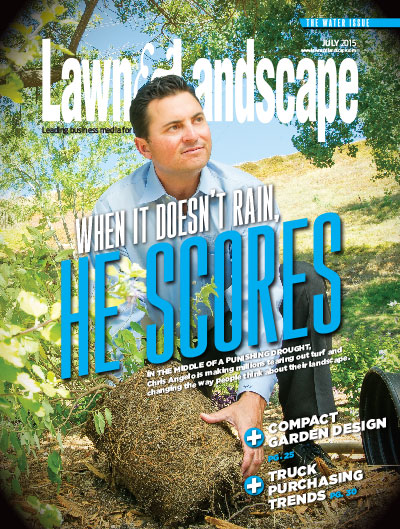
Explore the July 2015 Issue
Check out more from this issue and find you next story to read.
Latest from Lawn & Landscape
- LandCare promotes Burnett to chief people officer
- David J. Frank Landscape celebrates 65th anniversary with groundbreaking
- Lawn & Landscape’s May issue is live
- The 2024 Top 100 List
- What do we stand for?
- SiteOne partners with FMC
- GreenCare for Troops announces You Move, We Mow Challenge
- Culture shift
